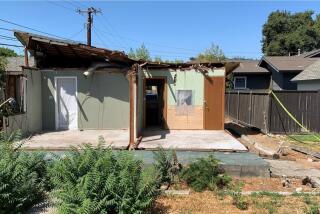Bad Inspection Report? Don’t Panic
June and Fred Black were diligent about getting their home ready for sale. For example, they ordered a pre-sale termite inspection report.The report revealed that their large rear deck was dry-rot infested, so they replaced it before putting their home on the market.
The Blacks also called a reputable roofer to examine the roof and issue a report on its condition. The roofer felt that the roof was on its last legs and that it should be replaced. The Blacks didn’t want buyers to be put off by a bad roof, so they had the roof replaced and the exterior painted before they marketed the home.
The Blacks’ home was attractive, well-maintained and priced right for the market. It received multiple offers the first week it was listed for sale.
However, the buyers’ inspection report indicated that the house was in serious need of drainage work. According to a drainage contractor, the job would cost in excess of $20,000. Fred Black was particularly distraught because he’d paid to have corrective drainage work done several years ago.
First-Time Tip
If you get an alarming inspection report on a home you’re buying or selling, don’t panic. Until you see the whole picture clearly, you’re not in a position to determine whether you have a major problem to deal with or not.
What happened to the Blacks is typical of what can happen over time with older homes. The drainage work that was completed years ago was probably adequate at the time. But since then, there had been unprecedented rains in the area, which caused flooding in many basements. Also, in the intervening years, drainage technology advanced. New technology can be more expensive but often does a better job.
The Blacks considered calling in other drainage experts to see if the work could be done for less. However, after studying the buyers’inspection report, the contractor’s proposal and the buyers’ offer to split the cost of the drainage work 50-50 with the sellers, the Blacks concluded that they had a fair deal.
The solution is not always this easy, especially when contractors can’t agree. Keep in mind that there is an element of subjectivity involved in the inspection process. For example, two contractors might disagree on the remedy for a dry-rotted window: one calling for repair and the other for replacement.
Recently, one roofer recommended a total roof replacement for a cost of $6,000. A second roofer disagreed. His report said that the roof should last another three to four years if the owner did $800 of maintenance work. Based on the two reports, the buyers and sellers were able to negotiate a satisfactory monetary solution to the problem for an amount that was in between the two estimates.
It’s problematic when inspectors are wrong. But it happens. Inspectors are only human. A home inspector looked at a house in the Oakland hills and issued a report condemning the furnace, which he said needed to be replaced.
The sellers called in a heating contractor who declared that the furnace was fit and that it didn’t need to be replaced.
The buyers were unsure about the furnace, given the difference of opinions. So, the seller called in a representative from the local gas company. The buyers knew that the gas company representative would have to shut the furnace down if it was dangerous. He found nothing wrong withthe furnace, and the buyers were satisfied.
The Closing
Sometimes finding the right expert to give an opinion on a suspected house problem is the answer.
Dian Hymer is a syndicated columnist and the author of “Starting Out, The Complete Home Buyer’s Guide,” (Chronicle Books, Revised 1998.)
More to Read
Sign up for Essential California
The most important California stories and recommendations in your inbox every morning.
You may occasionally receive promotional content from the Los Angeles Times.






